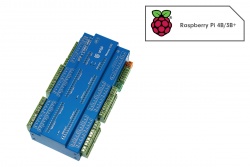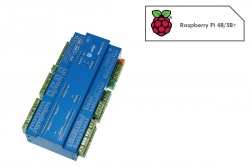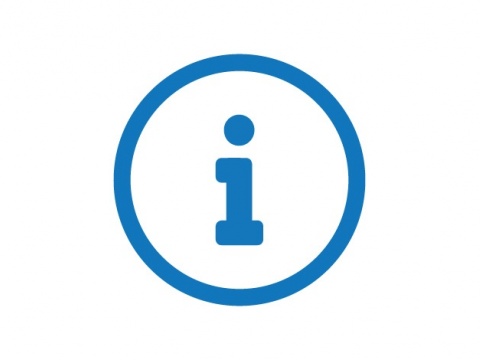
19/8/2020 Did you know digital inputs on Unipi controllers and extension modules can also act as counters? Find out the advantages of this feature.
What is a digital input?
Digital inputs detect if the connected voltage level is above or below a certain level, providing this information to the controller’s logic. These inputs can have only two states (0/1) and are suitable for reading signals from various binary devices. These include buttons, switches (light on/off), motion sensors (movement detected/not detected), position sensors and other two-state sensors.
What is the difference between regular digital inputs and counter inputs?
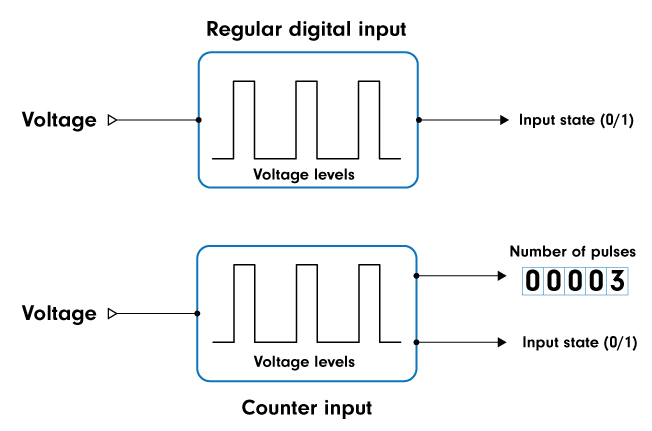
Regular digital inputs are limited by the speed of control application on the controller, which may not be able to detect short and fast pulses. Counter inputs are designed for such a purpose, and feature pulse counters able to detect even very short pulses tens or hundreds of microseconds long.
Controllers and standard extension modules offered by other vendors usually feature only regular digital inputs. If counter inputs are needed, users then have to purchase specialised counter input modules, which may significantly increase the installation’s cost.
Counter inputs on Unipi products
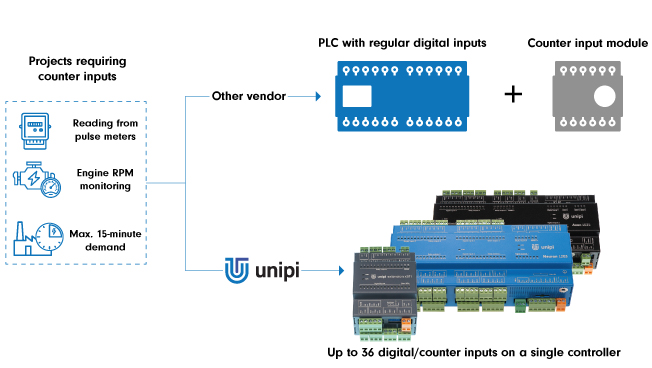
In contrast, Unipi Neuron and Unipi Axon programmable logic controllers, as well as Unipi Extension modules, feature digital inputs with counter functionality by default. Depending on the chosen model, you can have up to 36 counter inputs without the need to purchase any external modules. Counter inputs on the mentioned controllers and extensions can be used to detect pulses of up to 10 kHz frequency. When the maximum value of a counter (4 294 967 295) is exceeded, its value is reset.
Counter inputs on Neuron PLCs will reset if the device’s power is disconnected. On Axon controllers and newer Extension xS11 and xS51 modules, the counter values are stored in memory and loaded during the next device startup. This feature prevents any loss of data due to loss of power. 
Neuron L203 controller with 36 digital inputs
Application of counter inputs
Counter inputs are suitable especially for reading data from energy meters, water meters, gas meters and other pulse meters used within systems for monitoring and regulation, ventilation, heating and air conditioning. Another possible application is reading engine revolutions per minute.
For large energy subscribers such as industrial facilities or hotels, counter inputs can be very useful for monitoring of so-called maximum 15-minute demand. This term describes a maximum negotiated amount of consumed energy in a 15-minute interval, whose exceeding is usually fined. Neuron and Axon controllers, along with Unipi Extension modules, can be thus used to monitor energy consumption and to optimise the operation of non-critical devices within the monitored technology to avoid any demand charges for exceeding contract limit.
For this purpose, the Mervis IDE development environment, the core part of the Mervis system provided for free for all Neuron and Axon controllers, contains a predefined Load Shedding (E-Max, T34) function block. The block allows the controller to monitor energy consumption for up to eight device groups and automatically disconnect one or more groups if the current energy use would exceed the contract limit.
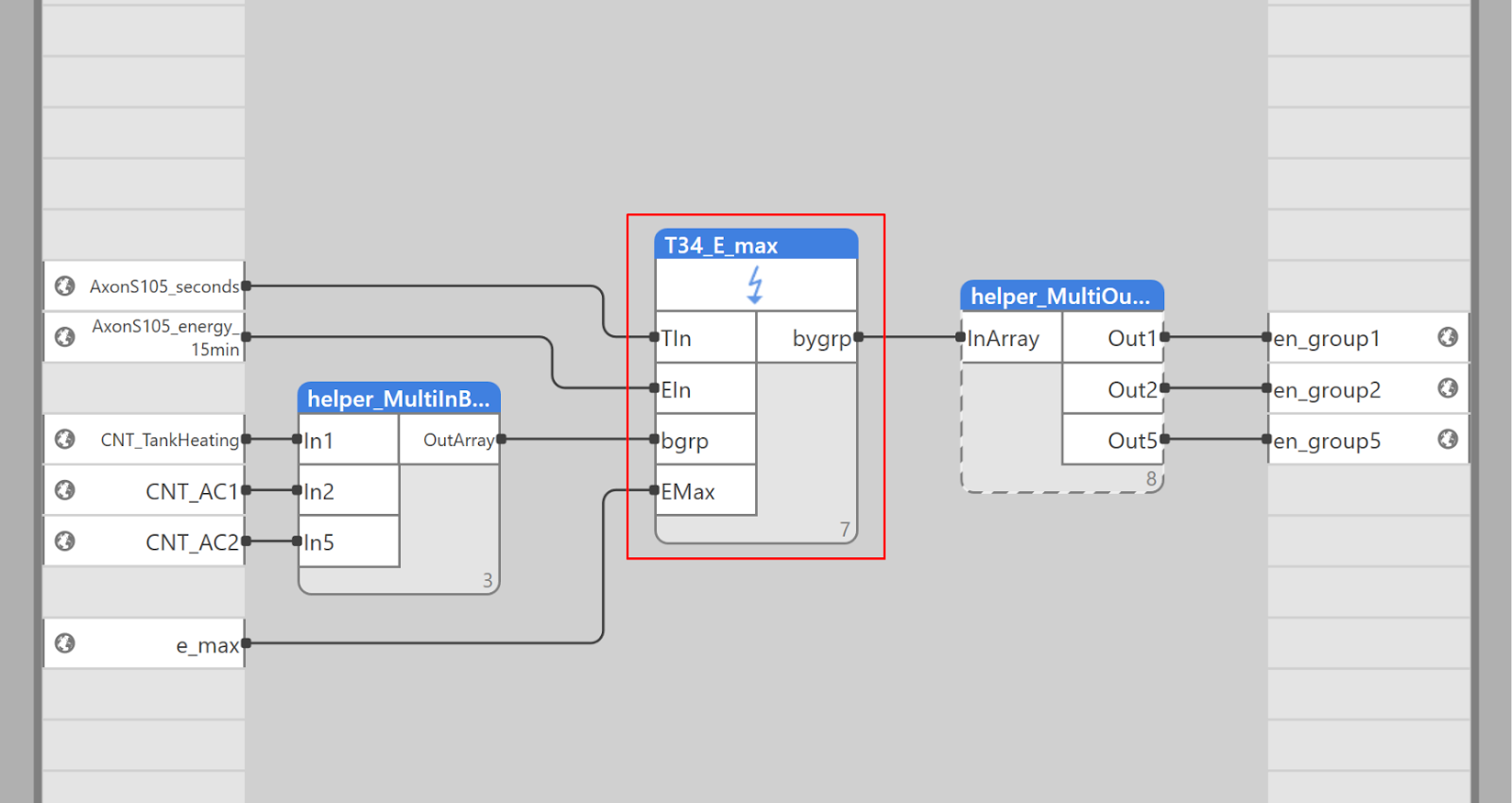
An example of using the Load Shedding Function block
